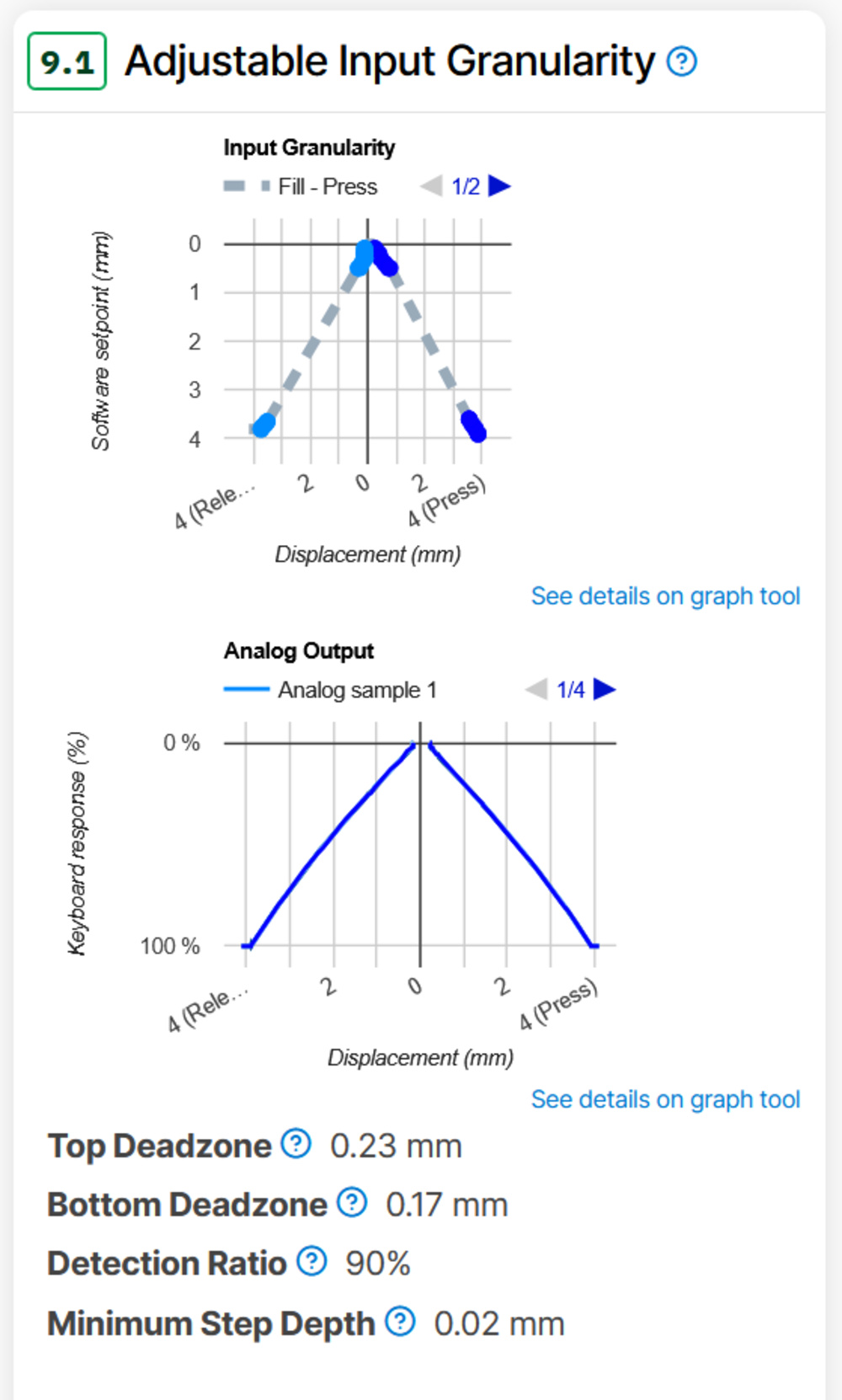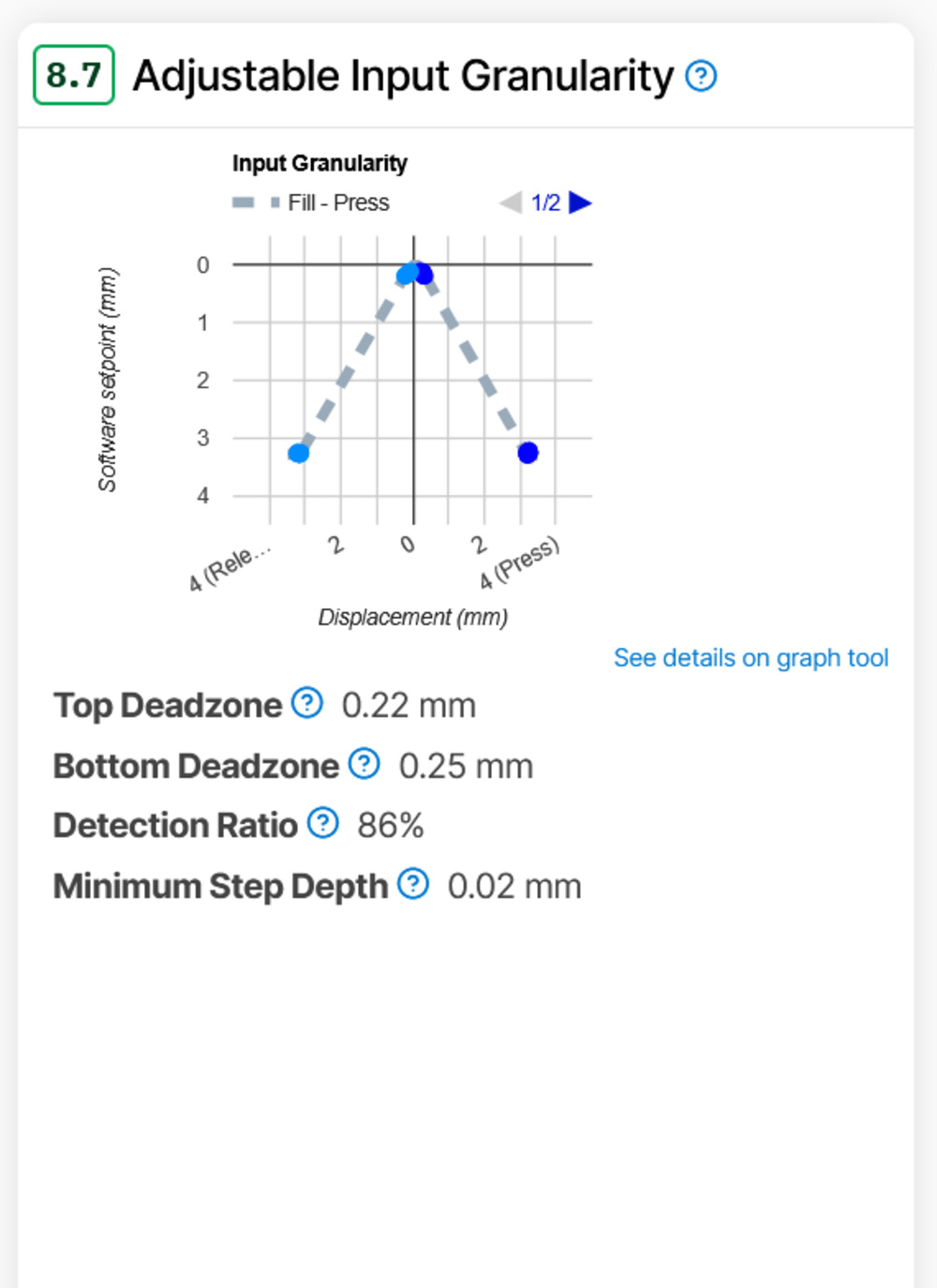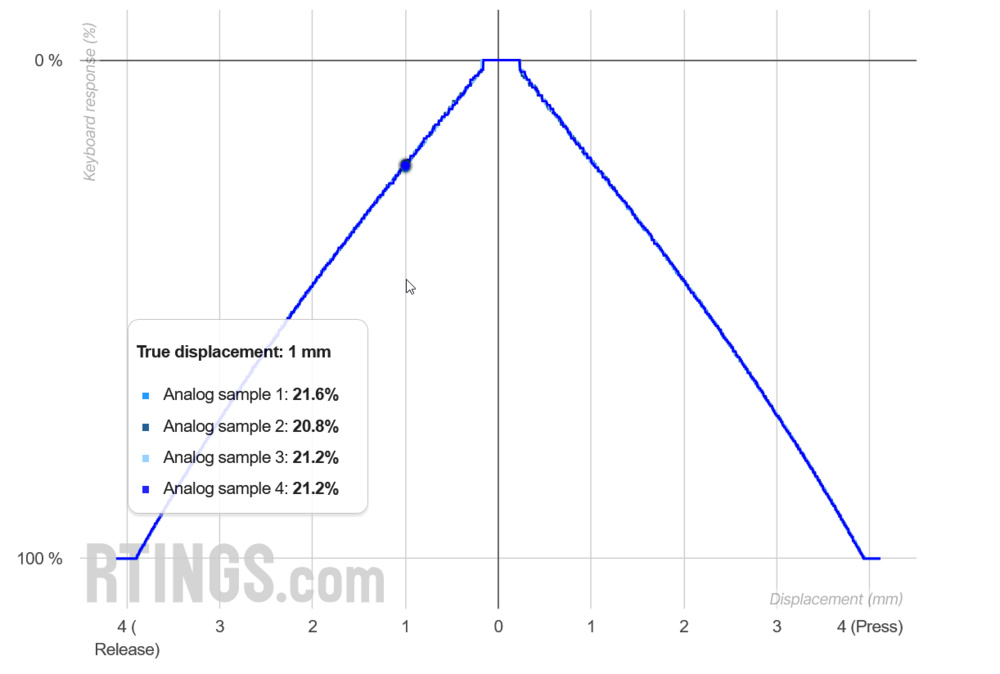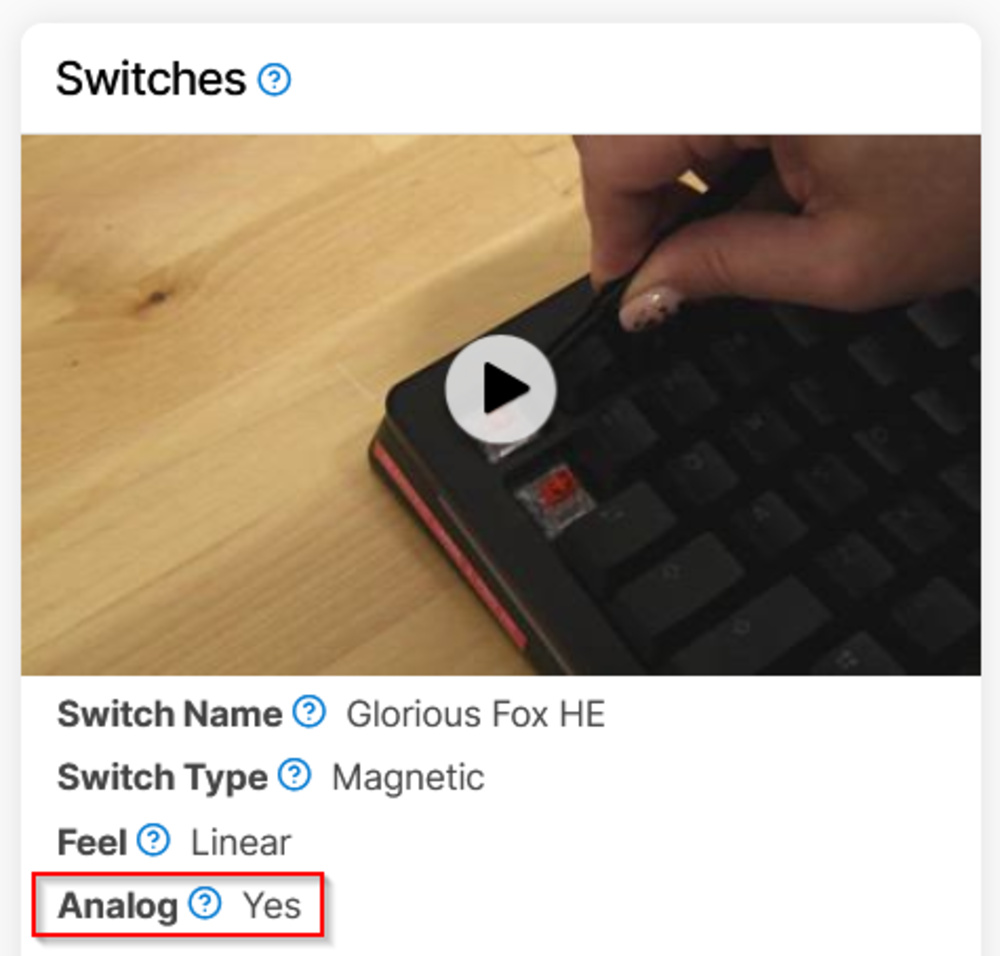- Table of Contents
- Intro
- What's Changed?
- New Tests
- Let Us Know What You Think
- Completed Updates
- Planned Updates
- Comments
See our previous 1.3.1 changelog.
Our 1.4 Test Bench update focuses on evaluating adjustable and analog keyboards, including those that use Hall effect or optical analog switches and emerging technologies like tunnel magnetoresistance (TMR) and inductive sensing. We've introduced new tests to better compare these keyboards with each other and with traditional mechanical or non-mechanical models.
For a deeper dive into the investigations that prompted these changes, see our accompanying R&D article.
What's Changed?
We've added a new test group and a single test to an existing test group.
| Test Group | Description |
|---|---|
| Adjustable Input Granularity | This new test group evaluates how well a keyboard detects input through the entire keystroke. |
| Switches | We've added a new Output Type test, which replaces our existing Analog test. |
New Tests
Adjustable Input Granularity
This new test group adds an Input Granularity and, if supported, an Analog Output graph. It also features several measurements, including deadzones for the top and bottom of key travel, a detection ratio that represents how much of the entire keystroke a keyboard can detect, and the keyboard's minimum step distance.
 |  |
Note that in the photos above, the Wooting 60HE includes both Input Granularity and Analog Output graphs because it supports true analog output. In contrast, the NuPhy Air60 HE lacks the Analog Output graph, as it doesn't support true analog functionality.
Below, you'll find close-up examples of both graphs. Hovering over a data point on the Input Granularity graph reveals the relationship between true switch displacement and the user-defined software setpoint. The Analog Output graph shows how a switch's true displacement corresponds to our analog samples, expressed as a percentage of the total keystroke travel.
 |  |
Switches - Output Type
Our new Output Type test in the Switches test group identifies whether a keyboard has non-adjustable, adjustable, or analog output. This replaces our Analog test introduced in Test Bench 1.3.1, which grouped adjustable and analog keyboards together. The new test offers a more nuanced, accurate classification.
 |  |
Most keyboards, such as conventional mechanical models, have non-adjustable input. While many adjustable keyboards are marketed as, or commonly referred to as, analog keyboards, true analog output remains relatively rare.
Let Us Know What You Think
Your feedback is instrumental in making improvements to our testing. If you have comments, questions, or suggestions about this or any future updates, reach out to us below in the comments section, on our Discord server, or email us at feedback@rtings.com.
21 Keyboards Updated So Far
We are retesting popular models first. So far, the test results for the following models have been converted to the new testing methodology. However, the text might be inconsistent with the new results.
- Corsair K100 AIR
- Corsair K65 PRO MINI
- Corsair K65 RGB MINI
- DrunkDeer A75
- Ducky One X
- GLORIOUS GMMK 3 PRO HE
- IQUNIX EZ60/EZ63
- Keychron K2 HE
- Keychron Q1 HE
- Lemokey P1 HE
- Logitech G PRO X TKL RAPID
- Logitech G915 LIGHTSPEED
- Logitech Wave Keys
- NuPhy Air60 HE
- NuPhy Field75 HE
- REALFORCE GX1
- Razer Huntsman V2 Analog
- Razer Huntsman V3 Pro [Mini, TKL]
- SteelSeries Apex Pro
- Wooting 60HE
- Wooting 80HE
73 Keyboards Planned To Be Updated
We are also planning to retest the following products over the course of the next few weeks:
- ASUS ROG Azoth
- ASUS ROG Falchion RX Low Profile
- ASUS ROG Strix Scope II 96 Wireless
- AULA F99/F75
- Apple Magic Keyboard for iPad 2021
- Apple Magic Keyboard for iPad Pro (M4)
- Apple Magic Keyboard with Touch ID and Numeric Keypad
- Corsair K100 RGB
- Corsair K55 RGB PRO XT
- Corsair K65 PLUS WIRELESS
- Corsair K70 CORE
- Corsair K70 MAX
- Corsair K70 PRO MINI WIRELESS
- Corsair K70 PRO TKL
- Corsair K70 RGB TKL
- Ducky One 3
- Dygma Raise 2
- Epomaker TH80 Pro
- GLORIOUS GMMK 2
- GLORIOUS GMMK 3
- HyperX Alloy Rise
- Keychron B1/B6 Pro
- Keychron C1 Pro/C2 Pro
- Keychron K10
- Keychron K3 (Version 2)
- Keychron K5 Max [K1 Max, K3 Max, etc.]
- Keychron K8 Max [K2 Max, K10 Max, etc.]
- Keychron K8 Pro [K2 Pro, K3 Pro, K4 Pro, etc.]
- Keychron Q5 Max [Q1 Max, Q2 Max, etc.]
- Keychron V Series
- Keychron V5 Max [V1 Max, V2 Max, etc.]
- Logitech Combo Touch
- Logitech ERGO K860
- Logitech G PRO Keyboard
- Logitech G PRO X 60
- Logitech G PRO X TKL
- Logitech G413 SE
- Logitech G515 LIGHTSPEED TKL
- Logitech G715
- Logitech G915 X
- Logitech G915 X LIGHTSPEED
- Logitech K585
- Logitech K780
- Logitech MX Keys
- Logitech MX Keys S
- Logitech MX Mechanical
- Logitech Pebble Keys 2 K380s
- Logitech Signature K650
- MoErgo Glove80
- NuPhy Air75 HE
- NuPhy Air75 V2 [Air60 V2, Air96 V2]
- NuPhy Field75
- NuPhy Gem80
- NuPhy Halo65 HE
- NuPhy Halo96/Halo75 V2
- NuPhy Kick75
- NuPhy Nos75
- ROYAL KLUDGE RK61
- Razer BlackWidow V3
- Razer BlackWidow V4
- Razer BlackWidow V4 75%
- Razer BlackWidow V4 Pro
- Razer DeathStalker V2 Pro
- Razer Huntsman Mini Analog
- Razer Huntsman V2
- Razer Pro Type Ultra
- SteelSeries Apex 3
- SteelSeries Apex Pro Gen 3
- SteelSeries Apex Pro Mini Wireless
- SteelSeries Apex Pro TKL (2023)
- Wooting two HE
- ZAGG Pro Keys 2
- ZSA Moonlander